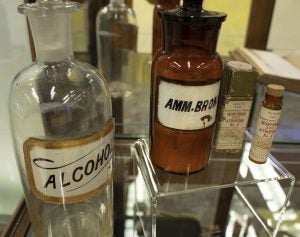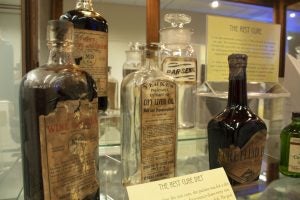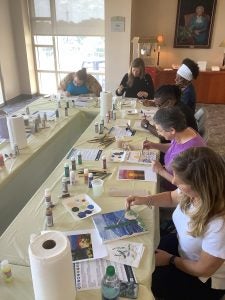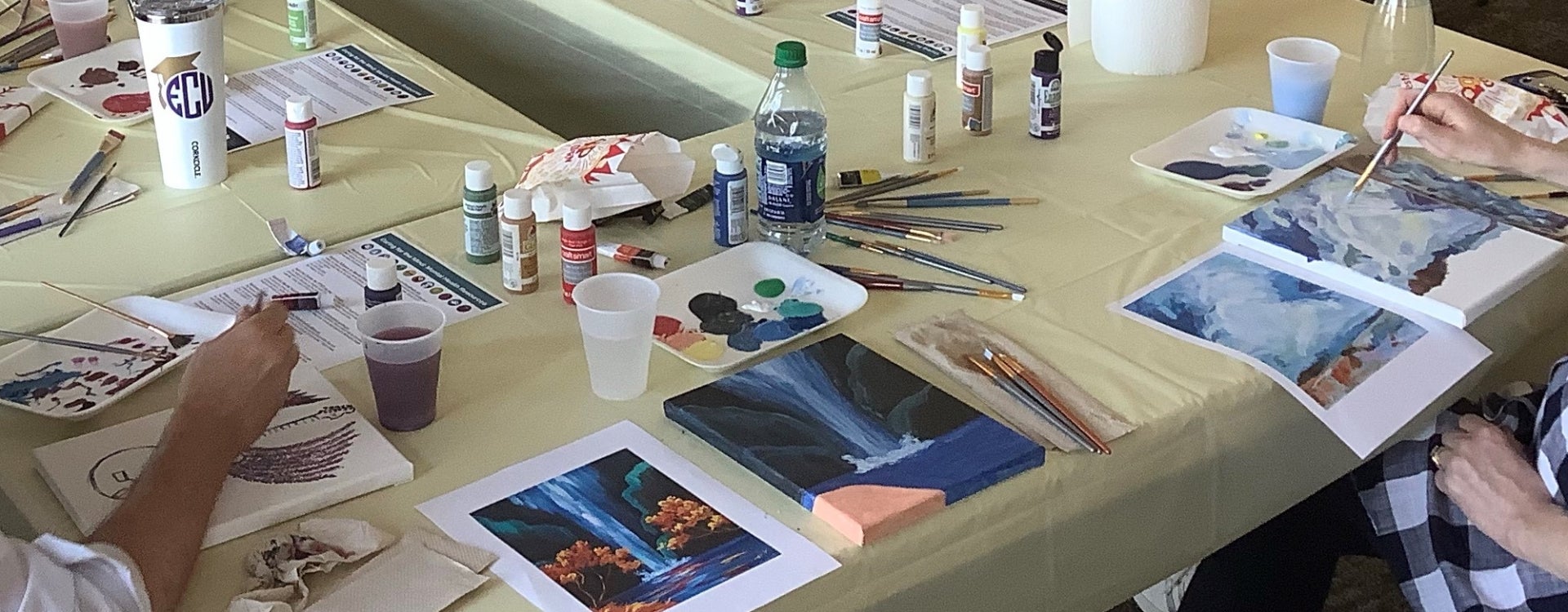Mental Health Therapies: Then and Now
Laupus Library is currently hosting the traveling exhibition The Literature of Prescription: Charlotte Perkins Gilman and “The Yellow Wall-Paper. Developed by the National Library of Medicine, this six-panel exhibit explores the life of Charlotte Perkins Gilman and her short story The Yellow Wall-Paper, which was published in 1892.
When Laupus Library History Collections hosts these exhibits, we like to incorporate items from our collection and from The Country Doctor Museum. We also like to host events that complement the exhibit. In this post, I’d like to feature some interesting artifacts on display, talk about their connection to the National Library of Medicine exhibit, and discuss the staff development event we hosted in coordination with the exhibit.
Charlotte Perkins Gilman had symptoms of depression after the birth of her daughter in 1885. She felt confined by motherhood and marriage and sought a creative outlet. Today, we define her experience as postpartum depression, but in the late-nineteenth century, it was considered “puerperal insanity,” “hysteria,” and “melancholia.” This “insanity” could occur during or after pregnancy, but it often occurred in two phases—mania and melancholia. Sometimes, the two phases happened simultaneously.

Alcohol, Ammonia Bromide, and a vial of Morphine and Atropine. On loan from The Country Doctor Museum.
Victorian doctors may have treated women with these conditions by promoting sleep and keeping the patient calm. A few doses of naphthalin usually helped patients to sleep. When a patient felt particularly restless, however, alcohol was prescribed. Morphine, bromide, hydrotherapy, and a nutritious diet often helped patients as well.
After several depressive episodes, Gilman sought the advice of nervous diseases specialist Dr. Silas Weir Mitchell. Dr. Mitchell had written extensively about nervous disorders—particularly in women—and he had developed “The Rest Cure.” This cure required 6 to 8 weeks of bed rest and isolation. The patient had to relinquish control of her life by allowing the doctor and nurse to do everything for her, including bathing and eating.
“Live as domestic a life as possible… And never touch pen, brush, or pencil as long as you live.”
Charlotte Perkins Gilman describes Dr. Mitchell’s advice (1913)

Beef Wine and Iron, Pure Blood Beef, Cod Liver Oil, and Arsenic. On loan from The Country Doctor Museum.
While on the rest cure, the patient was fed a diet of milk given in four-ounce doses every two hours. When necessary, patients were force-fed. The goal was to fatten the patient, since Dr. Mitchell believed a surplus of fat could help fight moral or mental strain. Cod liver oil, arsenic, iron supplements, and raw beef soup were often added to the diet as well.
Charlotte Perkins Gilman only received the rest cure for a month before she returned home. She found that she became even more distressed while continuing the treatment and decided to stop following the rest cure. Soon after, she wrote The Yellow Wall-Paper. The story tells the tale of a depressed woman on the rest cure who slowly loses her sanity. Gilman criticizes the rest cure in this short story while promoting the intellectualism and creativity of women through her writing.

Students and a Laupus Library staff member view The Literature of Prescription exhibit.
Last Wednesday, we hosted a staff health and wellness day in conjunction with the exhibition. Since the exhibit is on display during the summer, we decided a staff event would be the best approach. The goal of the event was to promote health and wellness, encourage staff members to view the exhibit, and to provide interaction amongst staff. We had a great turn out and the event was a success!
We provided three types of activities during the day: chair yoga, regular yoga, and art therapy painting. For chair yoga, we had a yoga instructor come from Campus Recreation and Wellness to facilitate the event. She taught a half hour session of chair yoga and a half hour session of regular yoga in the morning to get everyone’s blood flowing!

Laupus Library staff members paint during our art therapy painting session.
During the lunch hours, we hosted two hour-long art therapy painting sessions. We provided canvasses, paints, and brushes and let the staff go from there! Everyone created beautiful pieces of art to take home or hang in their offices.
Thanks to everyone who attended, and we hope to host more events like this in the future!
To learn more about the rest cure and mental health treatment for women during the 19th century, stop by the Evelyn Fike Laupus Gallery, 4th floor Laupus Library. The exhibit will be on display through July 21st.
